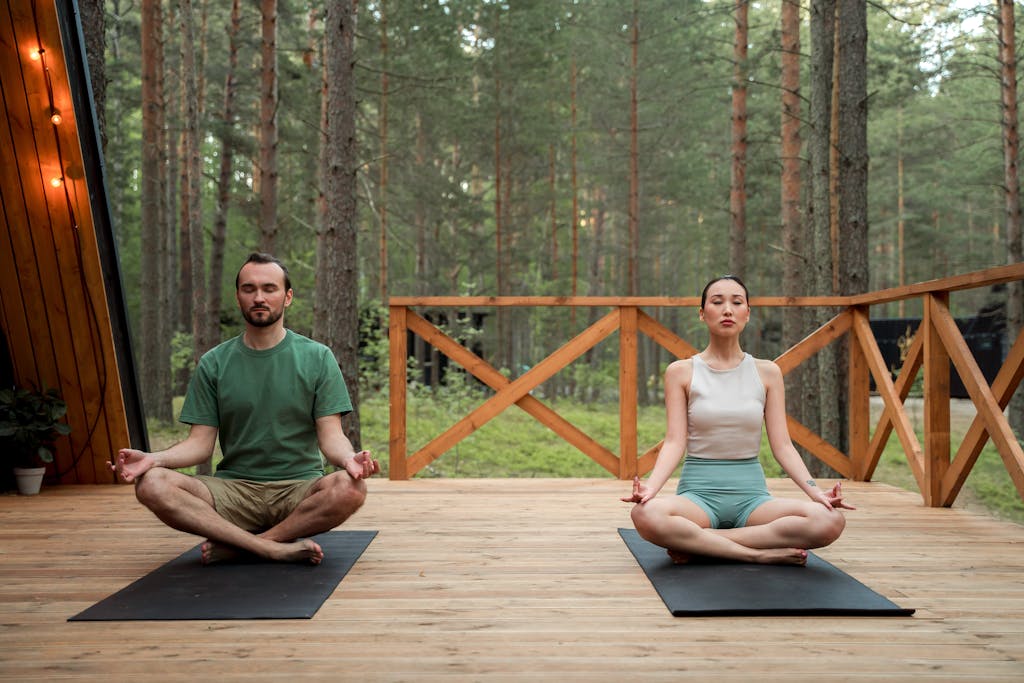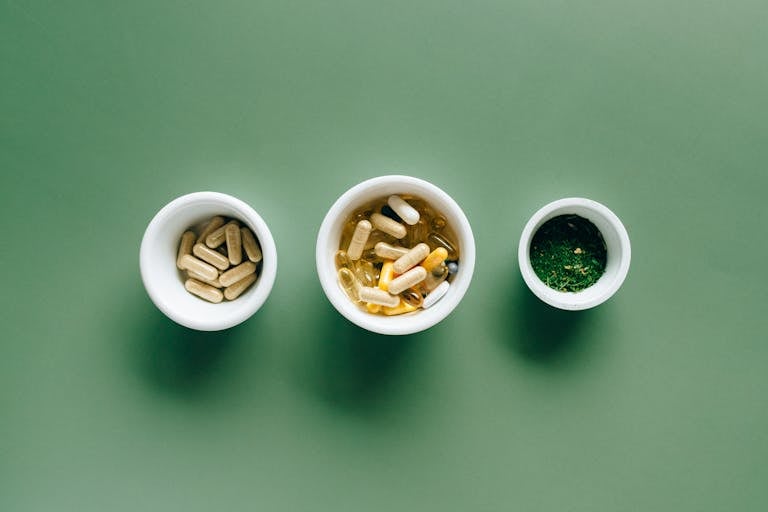Breathwork and biohacking are revolutionizing the wellness world, offering powerful ways to optimize health and enhance longevity. Breathwork involves conscious breathing techniques that improve mental clarity and reduce stress, while biohacking uses science and technology to fine-tune the body’s performance. Together, they form a holistic approach to achieving peak well-being. As more people embrace these methods, their potential to boost vitality and extend life is gaining widespread recognition in the wellness community.

Why Breathwork and Biohacking Are Essential for Longevity
Longevity is more than just a measure of how many years we live—it’s about how we feel and function as we age. Breathwork and biohacking provide complementary strategies for extending both lifespan and healthspan. Breathwork, through controlled breathing techniques, reduces stress, promotes relaxation, and improves oxygen efficiency. It has been shown to lower cortisol levels, improve heart rate variability, and increase cellular repair processes, all of which play a crucial role in reducing the effects of aging and promoting overall vitality.
Biohacking, on the other hand, uses science, technology, and data to optimize the body’s performance. By monitoring key health metrics such as sleep patterns, physical performance, and nutrition, biohackers can create personalized plans that enhance their well-being. Practices like intermittent fasting, high-intensity interval training (HIIT), and optimized sleep cycles not only improve physical health but also reduce the risk of chronic diseases that accelerate aging, such as heart disease, diabetes, and neurodegenerative conditions.
When combined, breathwork and biohacking create a powerful synergy for longevity. Breathwork helps manage stress and boost recovery, while biohacking ensures the body is operating at its highest potential. Together, they enhance physical performance, mental clarity, and emotional resilience. This holistic approach to health not only helps extend life but also improves the quality of life, allowing individuals to enjoy more years of good health, vitality, and mental sharpness.

What is Breathwork?
Breathwork refers to a range of techniques that involve conscious control and regulation of breathing to enhance mental, emotional, and physical well-being. This practice has been used for centuries across various cultures, often integrated into meditation, yoga, and spiritual rituals. In modern times, breathwork has gained widespread popularity for its ability to promote relaxation, reduce stress, and improve overall health. Techniques can vary from slow, deep breaths to fast-paced, rhythmic breathing, each targeting different aspects of the body and mind.
The key benefits of breathwork are profound, with stress reduction being one of the most immediate and impactful effects. By engaging in controlled breathing exercises, the body shifts from the fight-or-flight mode, reducing cortisol levels and promoting a state of calm. This can help alleviate anxiety and improve emotional balance. Additionally, breathwork is known to enhance focus and mental clarity by increasing oxygen flow to the brain, improving concentration, and reducing mental fog. It also boosts energy levels by stimulating the body’s circulation and oxygenating cells, leading to improved stamina and vitality throughout the day. Breathwork can be a simple, yet effective, tool to optimize both mental and physical performance.

What is Biohacking?
Biohacking is the practice of using science, technology, and self-experimentation to optimize the body and mind for improved performance, health, and longevity. The goal of biohacking is to push the body beyond its natural limits by employing various strategies to enhance physical and mental well-being. Common biohacking practices include optimizing nutrition through personalized diets, improving sleep with tracking devices and sleep hygiene techniques, and using wearables like fitness trackers or smart rings to monitor key health metrics such as heart rate variability, activity levels, and sleep patterns. By taking a data-driven approach to health, biohackers can make informed decisions to enhance their daily routines, boosting energy, focus, and overall vitality.
The Science Behind Breathwork and Biohacking
Breathwork influences key physiological processes like heart rate variability and stress regulation, while biohacking uses technology to optimize these functions for better performance. Together, they create a powerful synergy that enhances recovery, mental clarity, and overall well-being.

Breathwork’s Impact on the Autonomic Nervous System
Breathwork directly influences the autonomic nervous system, which controls essential bodily functions like heart rate, digestion, and stress response. By shifting the body from the sympathetic (fight-or-flight) state to the parasympathetic (rest-and-digest) state, breathwork helps to reduce stress hormones like cortisol. This promotes relaxation, improved circulation, and better oxygen delivery to the cells, all of which are essential for recovery and overall well-being.
Heart Rate Variability (HRV) and Recovery
One of the key physiological markers impacted by breathwork is heart rate variability (HRV). HRV reflects the body’s ability to adapt to stress and recover. Consistent breathwork has been shown to improve HRV, indicating better cardiovascular health and greater resilience to stress. Enhanced HRV helps the body recover more quickly from both physical and mental exertion, supporting long-term health and vitality.

Biohacking and Technology Amplifying Breathwork Benefits
Biohacking elevates the benefits of breathwork by integrating data-driven tools and technology. Wearable devices such as heart rate monitors, sleep trackers, and rings that measure recovery provide biohackers with real-time insights into their body’s response to breathwork. By tracking key metrics like HRV, sleep quality, and stress levels, biohackers can tailor their breathwork practices to optimize performance, recovery, and overall health. This combination of breathwork and biohacking allows individuals to take a more personalized, scientifically-informed approach to improving health, performance, and longevity.
Benefits of Combining Breathwork and Biohacking
Combining breathwork and biohacking enhances physical performance, boosts mental clarity, and accelerates recovery by optimizing the body’s physiological responses. This integration allows biohackers to personalize their wellness routines, achieving more effective results in stress management, endurance, and overall health.
Improved Physical Performance and Endurance
Combining breathwork with biohacking practices significantly enhances physical performance and endurance. Breathwork optimizes oxygen intake, which supports muscles during exercise, increasing stamina and reducing fatigue. Biohacking techniques, such as personalized nutrition and optimizing exercise routines, further complement this by ensuring the body is well-fueled and ready for peak performance, resulting in more efficient and effective workouts.

Enhanced Mental Clarity and Cognitive Function
When integrated into a biohacking routine, breathwork enhances mental clarity and cognitive function by increasing oxygen supply to the brain. This leads to better focus, concentration, and mental sharpness throughout the day. Coupled with biohacking tools, such as wearables that monitor sleep and brain health, individuals can maintain peak cognitive performance and productivity by adjusting their routines based on real-time data.
Better Stress Management and Emotional Resilience
Breathwork’s ability to activate the parasympathetic nervous system promotes calm and relaxation, effectively managing stress and enhancing emotional resilience. Pairing breathwork with biohacking practices, such as mindfulness techniques and stress-tracking wearables, helps individuals better understand and regulate their stress responses, improving emotional well-being and resilience over time.
Boosted Recovery and Immunity
Breathwork plays a key role in speeding up recovery and boosting immunity by improving circulation and lymphatic drainage. When combined with biohacking practices that track recovery metrics like heart rate variability (HRV) and sleep quality, individuals can optimize rest and recovery, allowing the body to heal more quickly and strengthen its defenses against illness.

Top 6 Breathwork Techniques for Biohackers
1. Wim Hof Method
The Wim Hof Method combines specific breathing exercises, cold exposure, and meditation to enhance physical and mental performance. This technique involves deep, controlled hyperventilation followed by breath retention, which significantly increases oxygen levels in the body. The result is improved cellular energy production, heightened endurance, and a stronger immune system. Beyond its physical benefits, the Wim Hof Method has been shown to reduce inflammation, improve circulation, and enhance the body’s resilience to stress, making it a powerful tool for biohackers seeking to optimize their health and performance.
2. Box Breathing
Box breathing, or square breathing, is a simple yet powerful technique that involves inhaling, holding the breath, exhaling, and holding again, all for equal time intervals—typically four seconds each. This method is excellent for calming the mind, reducing anxiety, and enhancing focus. It works by regulating the autonomic nervous system, helping to shift the body into a relaxed, parasympathetic state. For biohackers, box breathing is a great tool for managing stress, improving concentration, and promoting emotional resilience, especially in high-pressure situations where mental clarity is key.

3. CO2 Tolerance Training
CO2 tolerance training focuses on gradually increasing the body’s ability to tolerate higher levels of carbon dioxide through extended breath holds and slower exhalations. This technique is beneficial for improving endurance and cardiovascular efficiency by teaching the body to use oxygen more efficiently during physical exertion. By increasing CO2 tolerance, athletes and biohackers can delay fatigue, improve stamina, and enhance athletic performance. It’s particularly useful for long-distance runners or endurance athletes, as it helps optimize the respiratory and cardiovascular systems, leading to better physical output during intense activities.
4. Nadi Shodhana (Alternate Nostril Breathing)
Nadi Shodhana, or alternate nostril breathing, involves breathing through one nostril at a time while the other is held closed, alternating sides. This ancient practice is designed to balance the body’s energy flow, calm the nervous system, and improve mental clarity. By focusing on each breath, Nadi Shodhana helps to center the mind, reduce stress, and enhance overall well-being. Biohackers use this technique to improve cognitive function, increase focus, and manage anxiety, making it an ideal practice for both relaxation and mental optimization during high-stress situations.

5. Diaphragmatic (Belly) Breathing
Diaphragmatic breathing, also known as belly breathing, involves engaging the diaphragm for deep breaths, allowing the belly to rise and fall rather than the chest. This technique promotes optimal lung capacity, oxygenates the body more effectively, and helps to activate the parasympathetic nervous system, which is responsible for the “rest and digest” state. Practicing diaphragmatic breathing regularly can lower cortisol levels, reduce anxiety, and promote relaxation. For biohackers, it’s a highly effective method for improving sleep, reducing stress, and boosting recovery, making it a great tool for optimizing both mental and physical health.
6. Holotropic Breathwork
Holotropic breathwork involves a fast-paced breathing technique that induces an altered state of consciousness, allowing for deep emotional release and personal insights. The technique is often practiced with music and bodywork, helping individuals tap into subconscious thoughts and feelings. Holotropic breathwork is used for emotional healing, personal growth, and spiritual exploration. Biohackers who incorporate this method can experience enhanced mental clarity, emotional resilience, and a heightened sense of self-awareness. It is an excellent tool for those looking to break through mental barriers, clear emotional blockages, and deepen their personal understanding of themselves.

Breathwork Gadgets and Biohacking Tools
Several innovative devices are available to biohackers looking to optimize their breathwork practices and overall well-being.
Inhale
The Inhale is a breath training device designed to improve lung function, endurance, and overall respiratory health by guiding users through specific breathing exercises. By controlling the flow of air, it helps strengthen respiratory muscles, increase lung capacity, and enhance oxygen efficiency, making it a powerful tool for athletes and anyone looking to boost their performance.
Muse
The Muse is a brain-sensing headband that measures brain activity and provides real-time feedback to help users enhance their meditation and breathwork practices. By tracking mental states and offering insights through guided sessions, Muse enables biohackers to deepen their focus, improve mindfulness, and optimize their breathwork for mental clarity and relaxation.
Oura Ring
The Oura Ring is a wearable device that tracks various health metrics, including sleep, heart rate variability (HRV), and body temperature. While not solely dedicated to breathwork, the Oura Ring complements breathwork practices by providing insights into recovery and overall well-being. By tracking HRV, a key indicator of how well the body recovers from stress and breathwork sessions, it allows users to adjust their routines for optimal results.
How Technology Enhances Breathwork Effectiveness
Technology plays a crucial role in enhancing the effectiveness of breathwork by offering real-time data and feedback, which helps biohackers fine-tune their practices. Devices like Airofit and Muse provide users with guided breathing exercises, while wearable tools like the Oura Ring track recovery and sleep metrics, allowing individuals to optimize their breathwork sessions. By monitoring physiological responses such as HRV, oxygen saturation, and brain activity, these devices ensure that each breathwork practice is maximally effective, leading to improved physical and mental performance, faster recovery, and greater overall well-being. Through this integration of technology, biohackers can take a more data-driven, personalized approach to breathwork.

Conclusion
In conclusion, the combination of breathwork and biohacking creates a powerful synergy that can transform both physical and mental health. Breathwork enhances biohacking practices by optimizing the body’s natural processes, such as improving heart rate variability, reducing stress, and boosting recovery. Together, these practices help achieve peak performance, longevity, and overall well-being. As more people seek holistic approaches to health, breathwork and biohacking offer an exciting and effective path toward long-term vitality. Embrace this dynamic duo in your wellness journey and unlock your body’s full potential for health and longevity.










